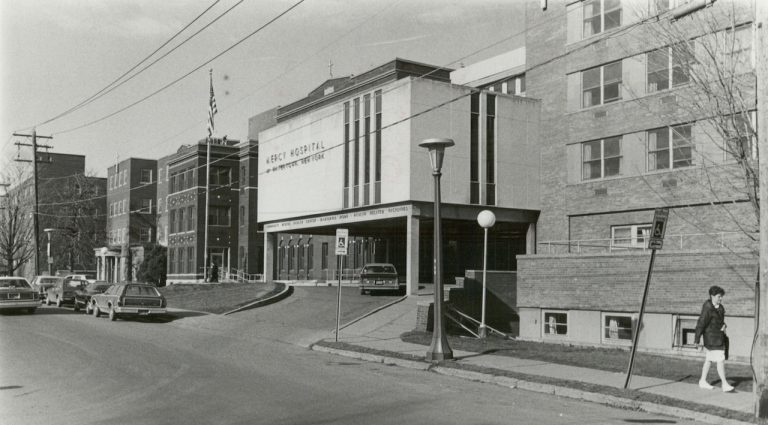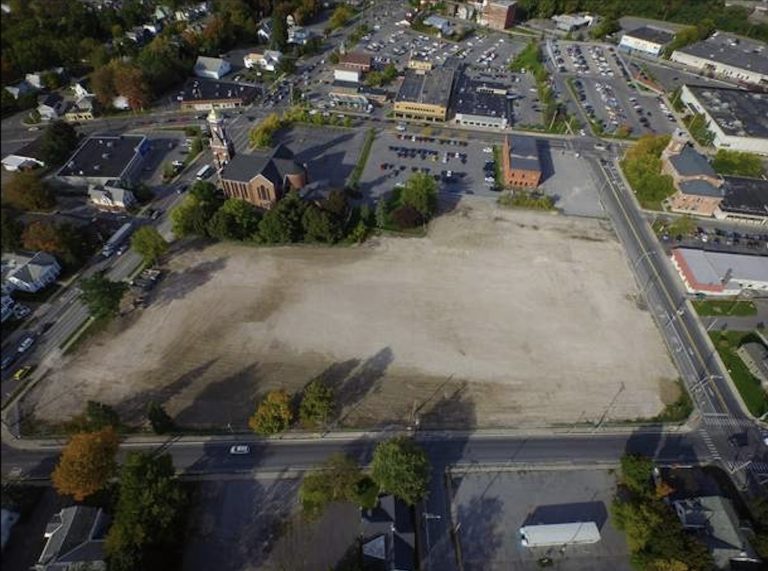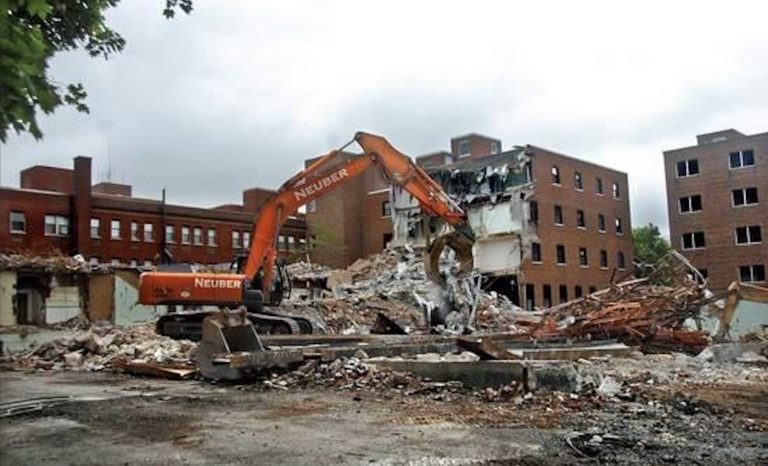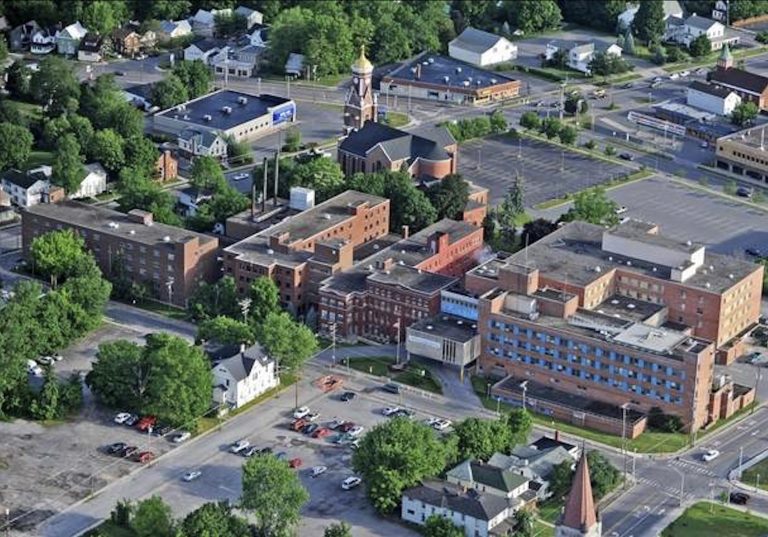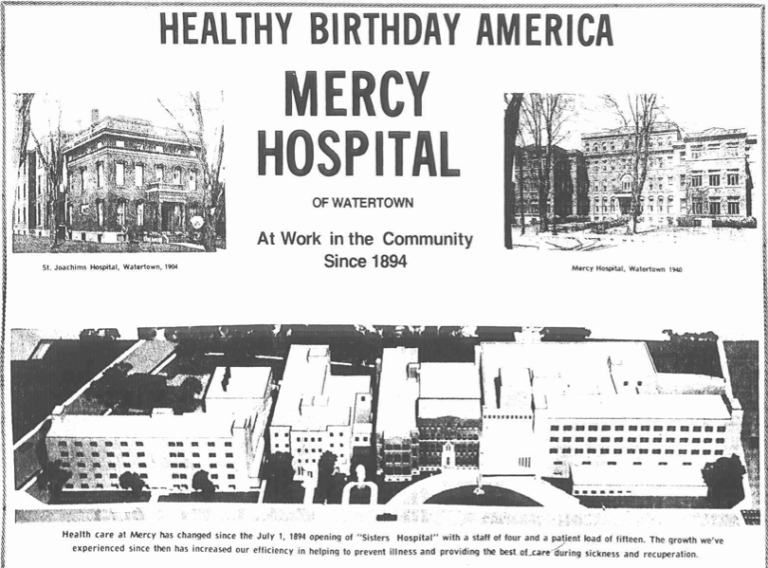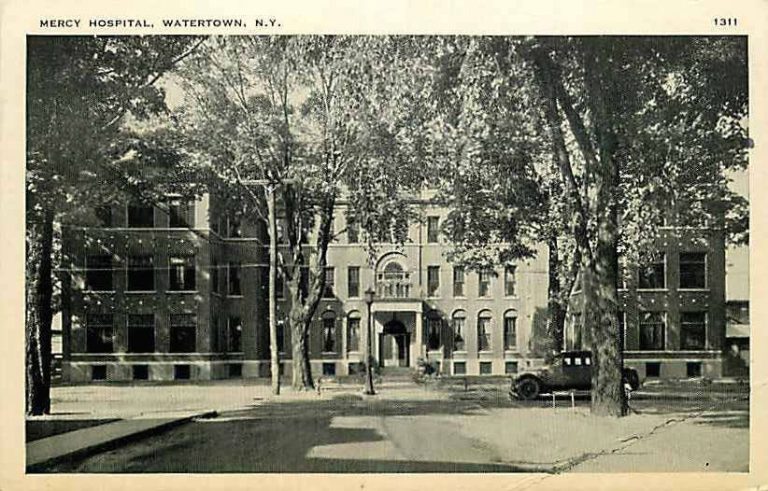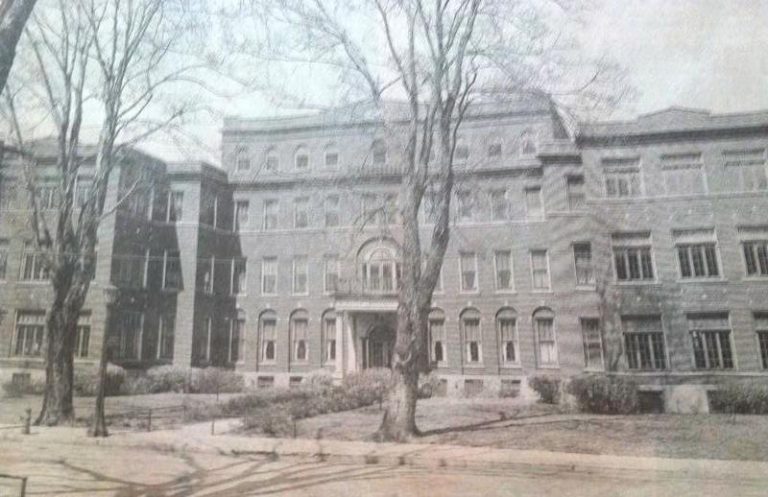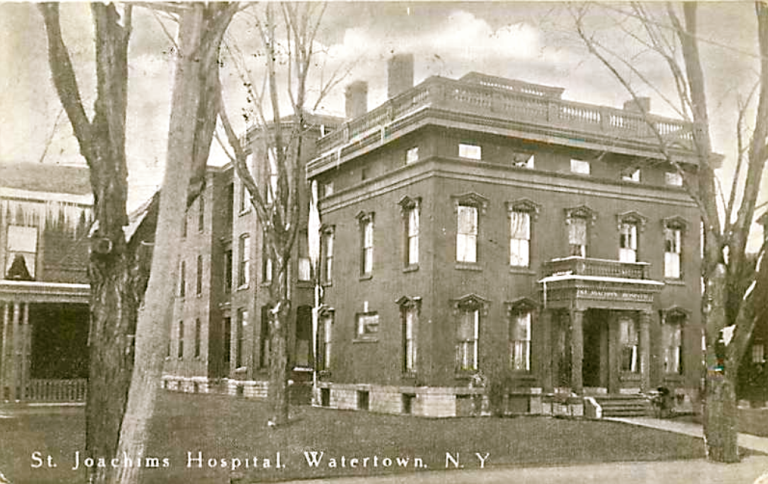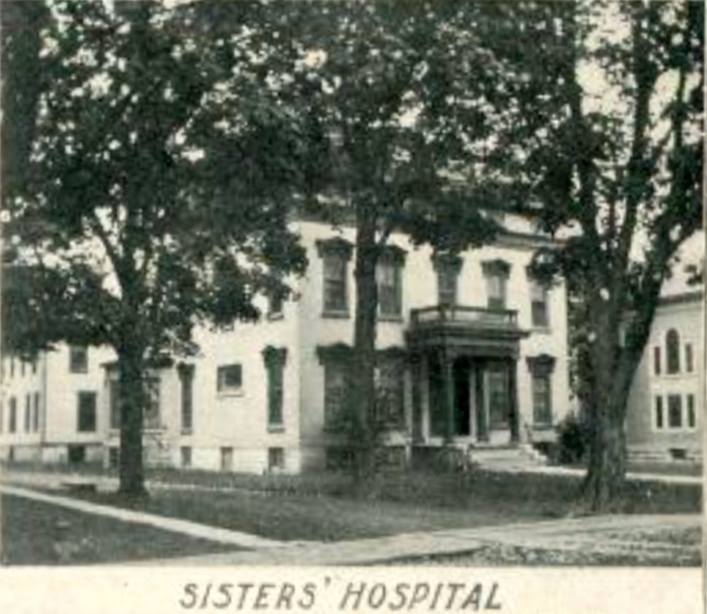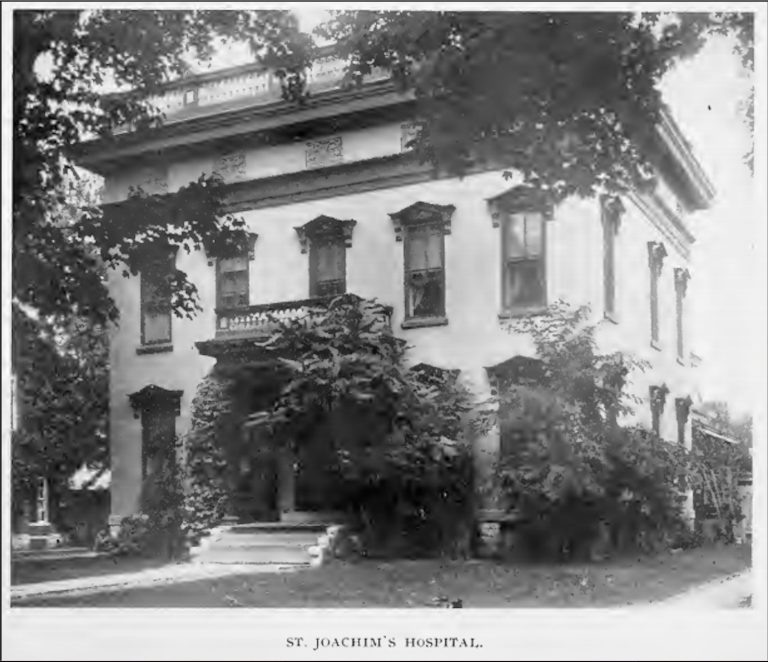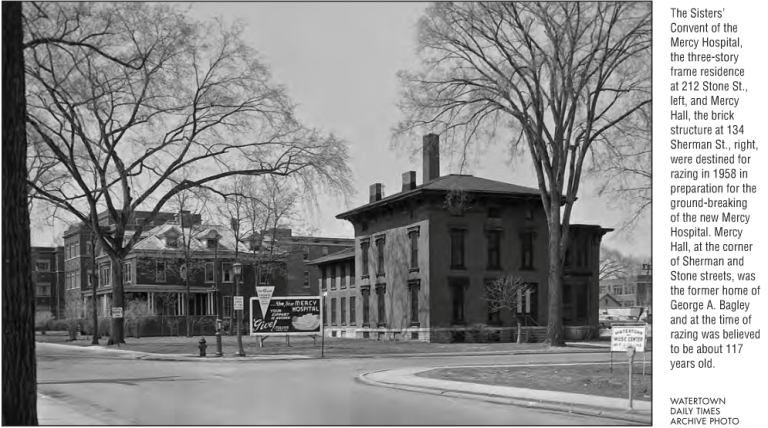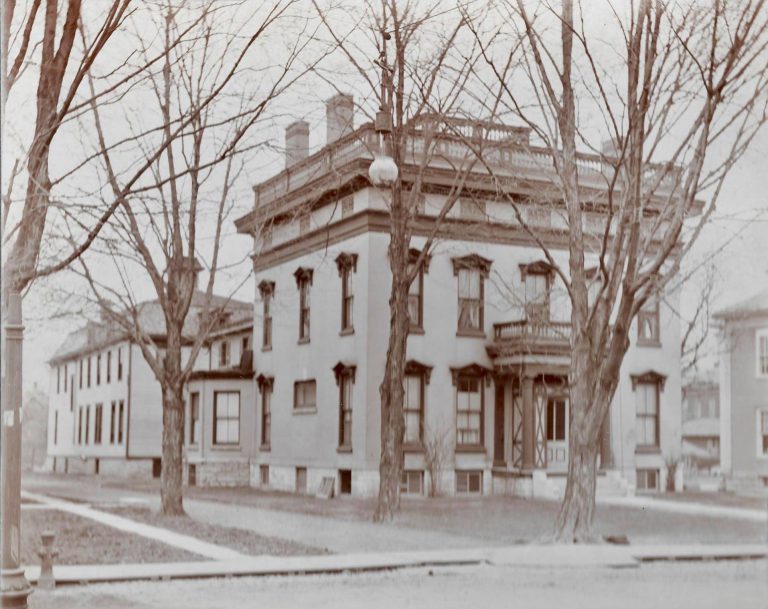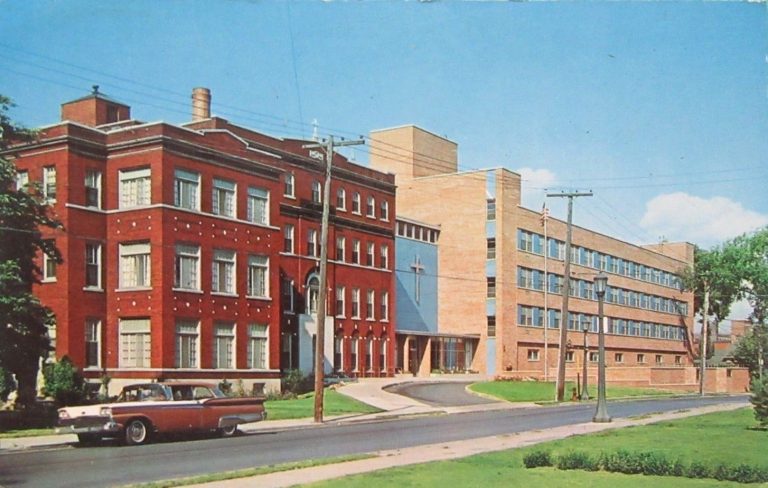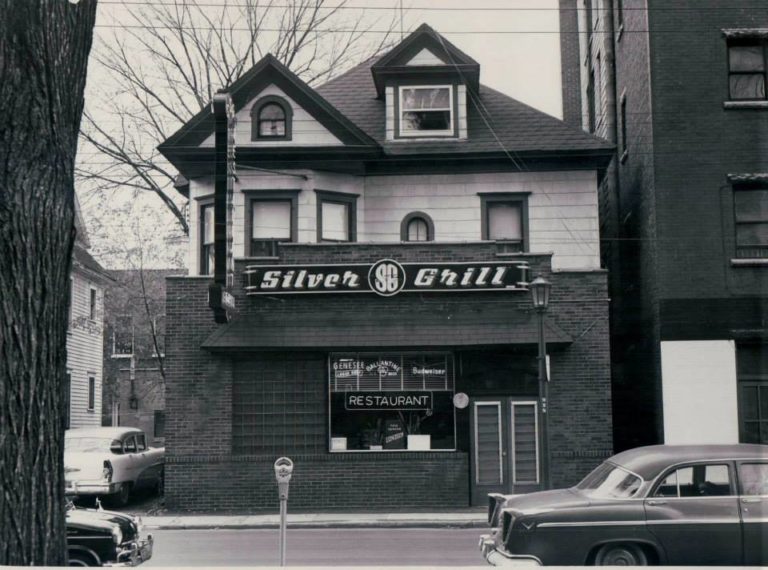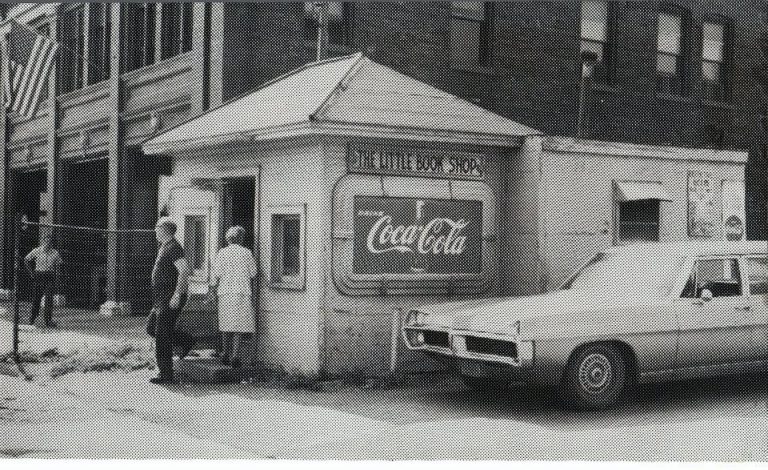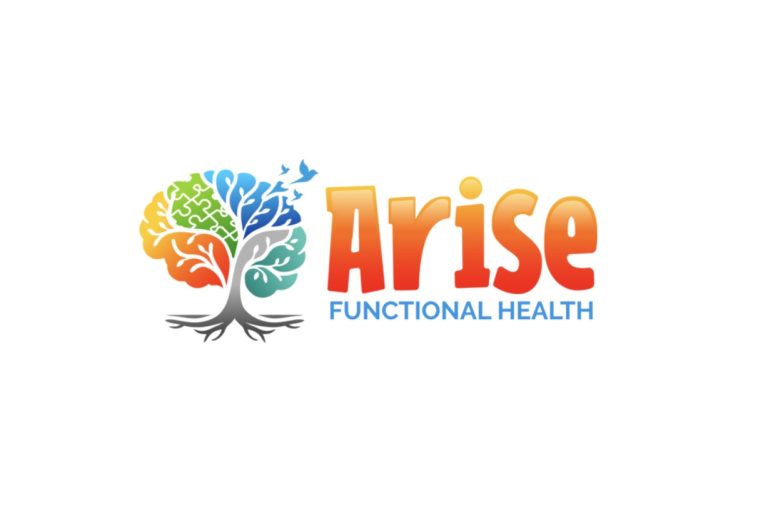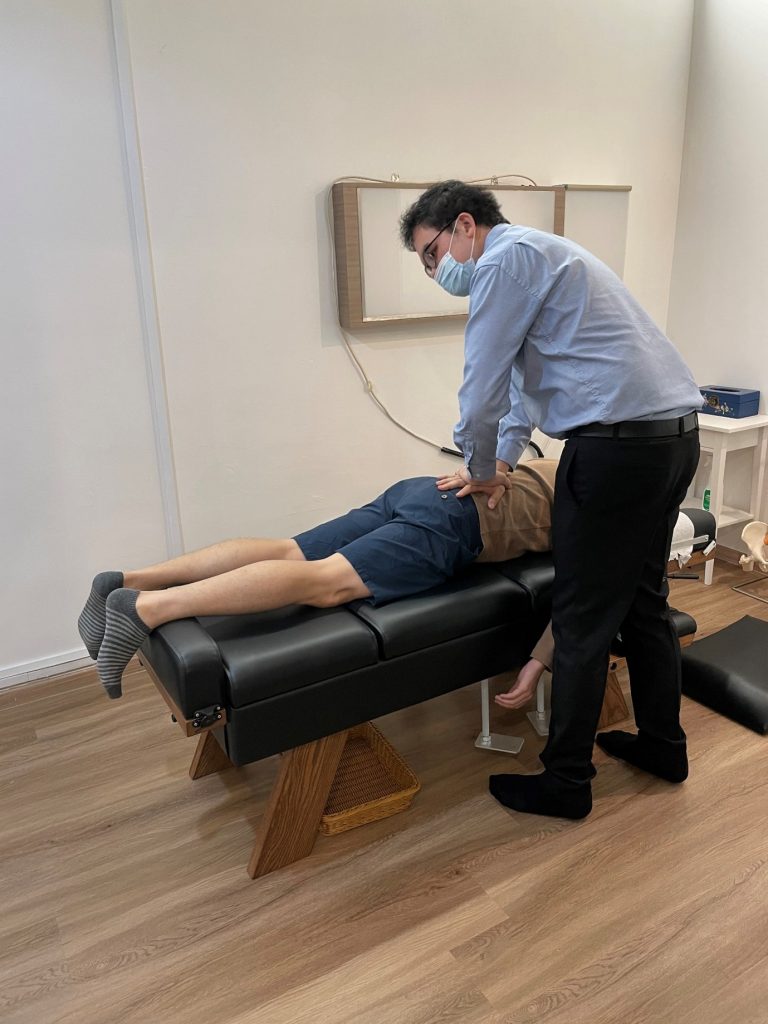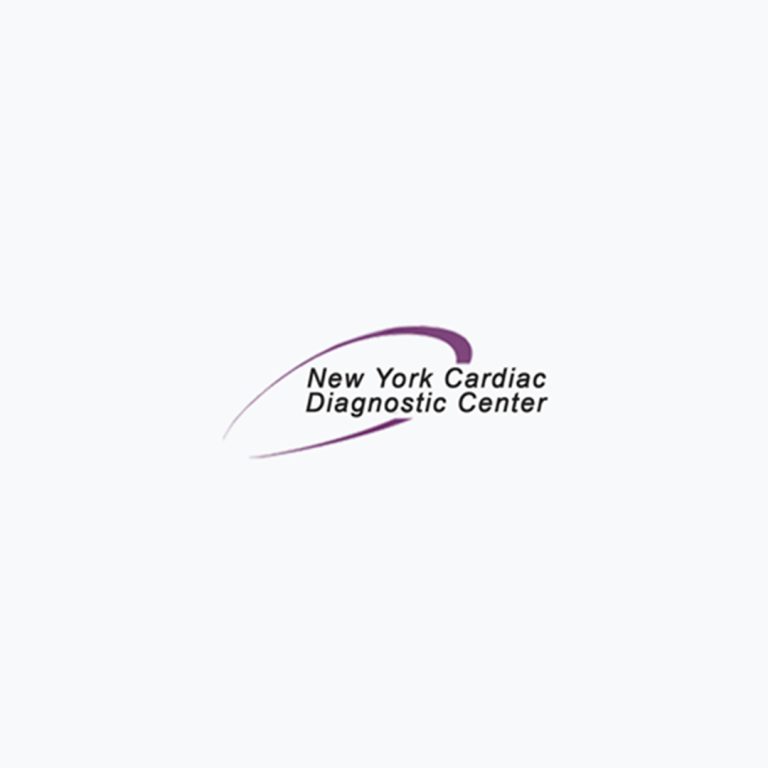Sisters’ Hospital, aka St. Joachim’s, Began In 1894, Became Mercy Hospital 30 Years Later
Mercy Hospital’s humble beginnings started in 1894, when its original facility, located near Benedict and Stone Streets, was purchased by Dr. H. G. P. Spencer from the estate of Dexter Wilder and leased to the Sisters of Mercy. Then known as Sisters’ Hospital, also referred to as St. Joachim’s Hospital, it had a staff of just four and a patient capacity of 15.

The hospital moved into the former Colonel Phelps home on Stone Street three years later, becoming its permanent home for nearly 30 years. In 1905, Sisters’ Hospital established a nursing school, St. Joachim’s, which later became the Mercy Hospital School of Nursing in 1926. It should be noted that St. Joachim’s was also a school operated at 34 Stone Street as early as 1894, operated by the Sisters as well in the same year, the name and its history lent to confusion over the years as it was used interchangeably.
By the 1920s, Sisters’ Hospital and the House of the Good Samaritan had grown substantially. Both were major benefactors of Watertown’s Community Chest, providing essential functions to the city and surrounding areas. As a result, more than a quarter of the Chest’s budget was divided between the two institutions. Decades later, this factor proved detrimental to Mercy Hospital’s future success, as its budgetary and debt issues reared their heads as early as the Great Depression.

As reported in the September 12, 1934, Watertown Daily Times–
In 1933-34, Mercy Hospital was allotted $10,180, a figure below the assistance given during the period from 1925-30.
Never before in the history of the hospital, officials say, has there been the number of unpaid bills on the records. The effect of the depression is also reflected in the popularity of the wards and the infrequency with which private rooms are sought.
Back in the 1920s, the transition from Sisters’ Hospital/St. Joachim’s to Mercy Hospital began in 1924 when the hospital began planning for its future expansion and established several committees. The Times wrote on March 21–
Further plans for the coming financial and building company of the St. Joachim’s Hospital were discussed Thursday night at a meeting of the board of directors held in the headquarters of the Hospital Development Service at room 120, Hotel Woodruff. Several tentative committees were appointed. As soon as the committees have been definitely established an announcement will be made of their personnel and their duties.
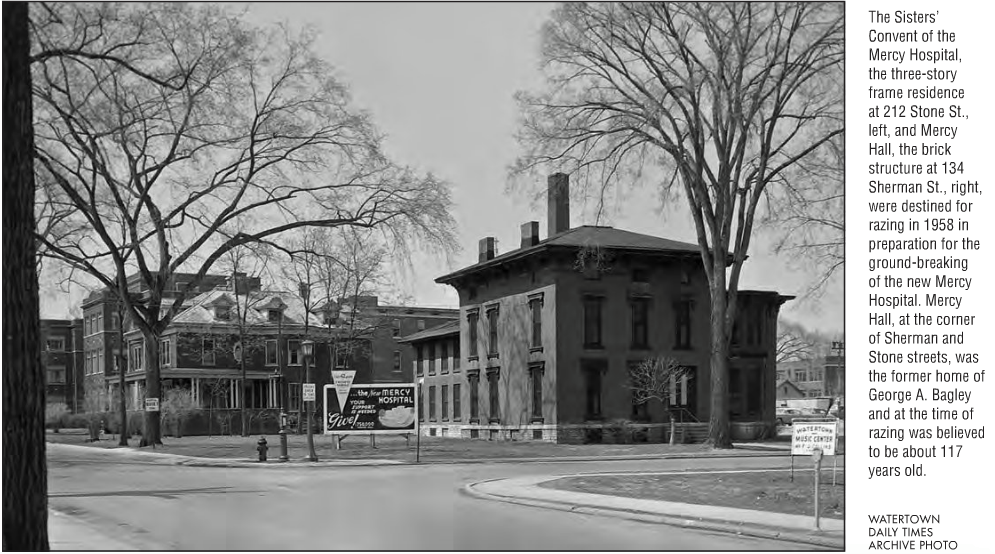
Less than a month later, one of the first decisions to be made was changing the institution’s name. At this point, the hospital was primarily known as St. Joachim’s Hospital, at least in the press, and Sisters’ Hospital more informally. The change was not unexpected and discussed for several years before receiving approval from the Sisters of Mercy and the board of directors.
The reasons cited were, unsurprisingly, the considerable confusion between the two names, as well as St. Joachim’s pronunciation having proved difficult for many and it’s “not a name that lingers in a person’s memory or is impressive.” Rather, the desire was to select a name expressive of the institution’s spirit. Mercy Hospital was favored amongst all the authorities involved, proving to be “both simple and appropriate.”

The second item on the agenda was site location–
It was mentioned that the question had been asked if the new hospital was to be erected on the property which the board of directors recently purchased. Fearing that the public might not understand the reason for the purchase of this property, it was decided by the committee to go on record as giving assurance that the matter of location is an open question, and will be given earnest consideration by the committee.
Further, that the action of the board of directors in negotiating the purchase of the property, it was deemed advisable to insure (sic) future protection in case a more attractive or desirable property could not be secured.
As an interesting side note, The Times originally believed the purchase of approximately 150 acres, stretching between Gotham Street and upper Washington Street from John C. Thompson, known as “The Park Land,” was intended for the new site. This was not the case, but it later became the home to Samaritan Summit Village after Samaritan vacated its use of the former Mercy Hospital around 2012-13.
David D. Kieff, who did many major architectural works in the city, including City Hall, was tasked to draw up plans for the new Mercy Hospital in 1923-24, completed in early May of ’24. The plans were reviewed by the hospital authorities, the board of directors, and Cornelius S. Loder, a consulting expert from New York City, who had final approval.
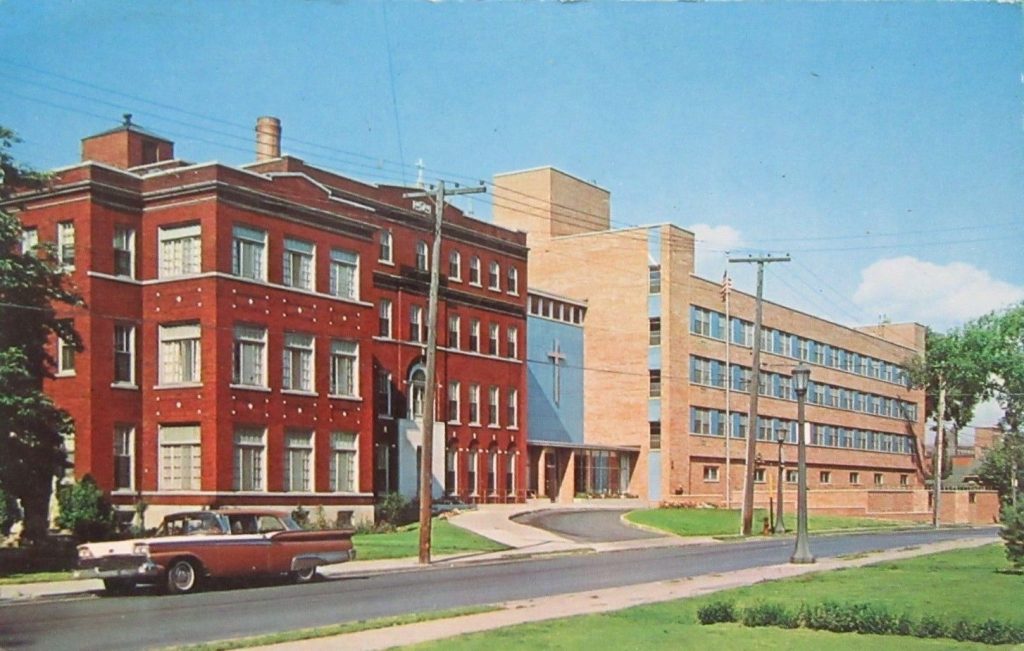
Per The Times May 2, 1924 article–
The plans as submitted by the architect call for a four story, concrete and tapestry brick structure of fire proof construction. The frame work will be of steeler girders and all the floors, walls and stairs of reinforced concrete. The entire building is to be of the most modern and best possible hospital construction. It is to have a frontage of 192 feet and a depth of 40 feet, and projection wings on the front of 40 feet by 40 feet and a rear wing of 40 feet in width and 85 feet in depth. In addition to the main building the plans provide for a nurse’s home and a power plant in separate buildings.
The nurse’s home and power plant are to be located in the rear of the main building, according to the plans, and of similar construction.
The hospital’s capacity would be 200 beds, pending the results of a financial drive to raise $500,000 for its construction. The drive and subsequent construction were deemed necessary due to “inadequate quarters, insufficient equipment, lack of beds,” which led to the slogan, “Meet the Need with a Deed: Save Mercy Hospital” throughout Jefferson County, a cry repeated less than 70 years later.
The groundbreaking ceremony was held early in the morning of June 11, 1925, with little fanfare other than a few onlookers passing by several weeks after the old nurse’s home, which occupied the site, was torn down. The ground was blessed by Rev. Father Euclid Elie, a pastor of Holy Family Church.
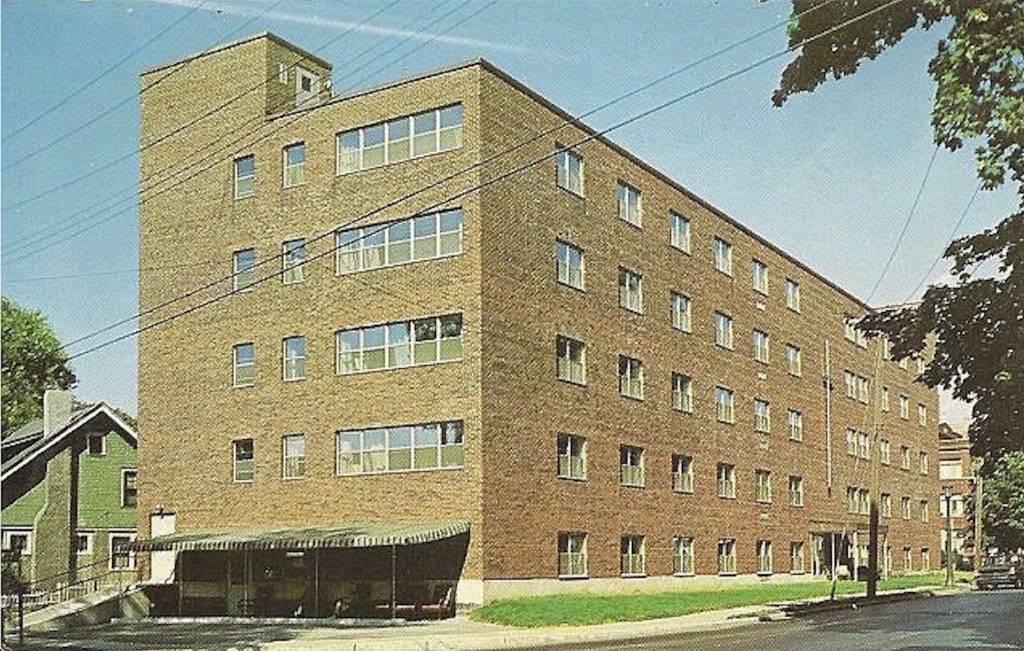
Over the years, several additions have been added to Mercy Hospital, giving the complex an appearance that Dr. Frankenstein sewed different parts on from various eras. Some included a new X-ray building, a groundbreaking in January of 1938; an expansion in 1958; and the Madonna Home of Mercy Hospital, the first nursing home connected to a hospital in Northern New York, in February 1963.
Unfortunately, if not sooner, things went amiss for Mercy Hospital in the 1980s. By 1990, the hospital’s liabilities added up to $21 million, nearly twice the amount, $12 million, which had been reported earlier, as the institution struggled in numerous capacities to quell spending, turn a profit and pay off debts which included more than $14 million in current liabilities from bank loans, accounts payable to suppliers and other debts, including $6.7 million in mortgages and long-term debt.
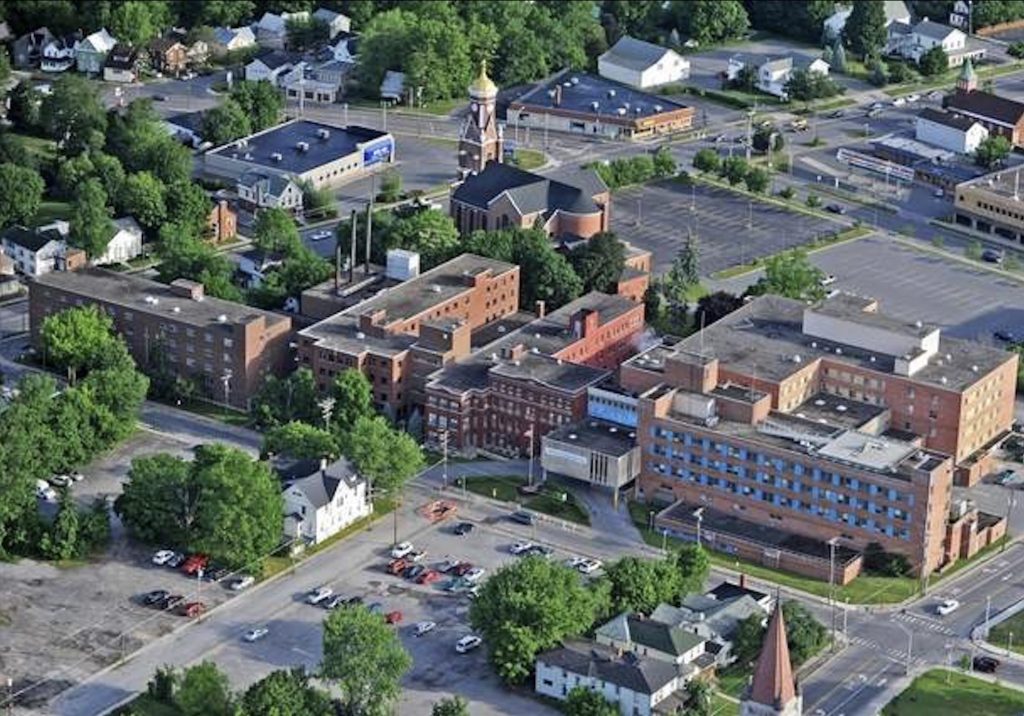
In a January 5, 1990 Times article, Mayor T. Urling Walker stated, “You’re talking a lot of debt, and the question is, why did they brush this under the rug?” According to The Times article, Mercy Hospital had lost $2.4 million in the first 11 months of 1989, an average of nearly $220,000 a month.
As a result, the hospital was seeking $1.4 million in loans to carry it for another year. Walker, president of the Watertown Trust, was trying to put together a $850,000 loan package from several Watertown banks, stated–
“That’s a serious situation. We have 900 jobs at stake. And some 2,700 vendors either haven’t been paid of have been paid only partially; the hospital doesn’t even know. They’ve got themselves in a big pickle. They don’t have any money.”
Aside from the economic impact on the area, Mercy Hospital ran many unique services, though profitable, were offset by several costlier services. Amongst the unique were the trauma center, mental health, Military Assistance to Safety and Traffic (MAST) helicopter dispatch, and alcoholism. By the end of January, the hospital officials discussed cutting the equivalent of 105 full-time jobs.
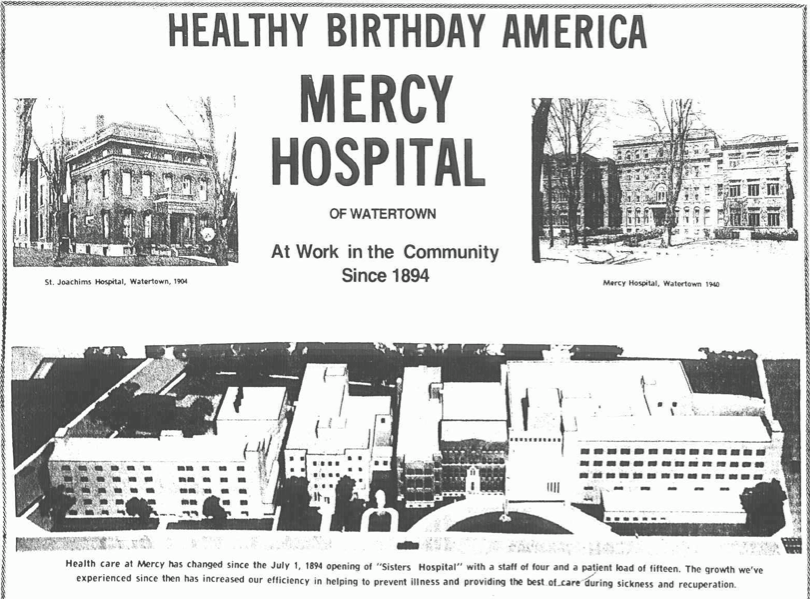
Despite several efforts to raise money in the ensuing months, cutting back on expenditures and services, and several extended deadlines by Watertown Trust with personal guarantees, Mercy Hospital fell just short of its goal, and the loan was denied. By early July, the House of the Good Samaritan had announced it no longer shared equipment, a long-standing agreement that benefitted both institutions and the community.
More layoffs (250) and cuts in services followed as Mercy Hospital planned to leave the acute care business as of October 1, 1990, stating, “anyone needing emergency care, surgery, or hospitalization in the community will need to go to the House of the Good Samaritan.”

In mid-October of 1990, Mercy Hospital filed for Chapter 11 bankruptcy in Utica, stating it would continue to operate while it came up with a bankruptcy plan. At the time of filing, it had almost 500 creditors, many of whom had not been paid and several of which had filed lawsuits.
Per Casetext.com–
On October 11, 1990, Mercy filed a voluntary petition for relief pursuant to Chapter 11 of the Bankruptcy Code. Prior to the filing, Mercy had received four separate provider numbers applicable to Mercy’s then existing hospital based services. These numbers represented the reimbursement agreements for four separate years and were not assumed by the Debtor voluntarily or pursuant to the court’s directive. See 11 U.S.C. § 365. Mercy continued to serve Medicaid patients as a debtor-in-possession throughout its reorganization and received a series of new numbers for services provided through its newly established facility, Mercy Center for Health Services, in 1991.
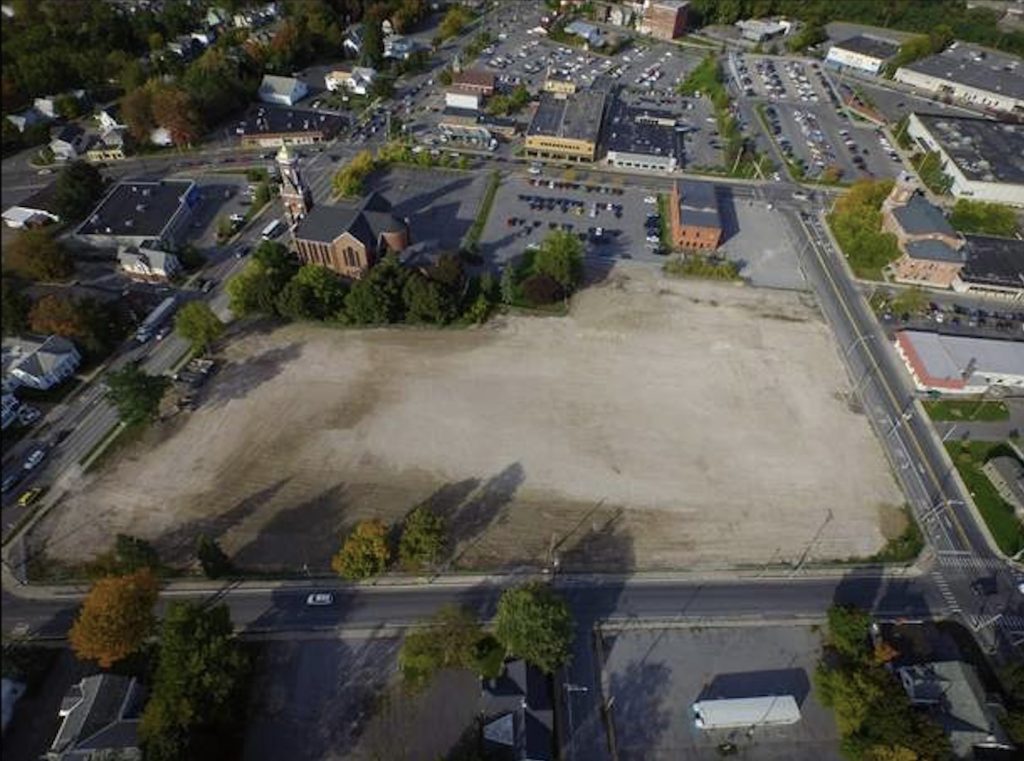
In the ensuing years, property ownership changed hands, and Genesis Healthcare of New York replaced Mercy Center for Health Services. As previously noted, Samaritan used the facilities until the new Samaritan Summit Village opened, vacating the complex.
This opened the door for Syracuse-area developer COR Development Co. of Fayetteville, who had shown interest in the property, to begin foreclosure proceedings as the current owner, MGNH Inc., had failed to show an interest in maintaining the property since a bankruptcy action.
Below: Video from the Watertown Daily Times YouTube channel showing the demolition of the former Mercy Hospital in 2014.
COR had plans to develop and invest $70 million to transform the site into 40,000 square feet of mixed-use retail, office space, and 160 – 200 apartments. One of the first steps would be demolition and site remediation, which required two months of emptying the buildings of their equipment, furniture, beds, etc., and asbestos abatement.
In May 2014, the site was ready for demolition, and Lt. Gov. Robert J. Duffy returned a year after throwing support behind the Mercy Hospital’s redevelopment to kick off the transformative project that only progressed as far as the demolition and clean-up of the site as heads of COR Development Co. faced unrelated legal issues, and the project was scrapped.
Today, the lot remains empty and, as of 2023, is for sale for $2,500,000.

